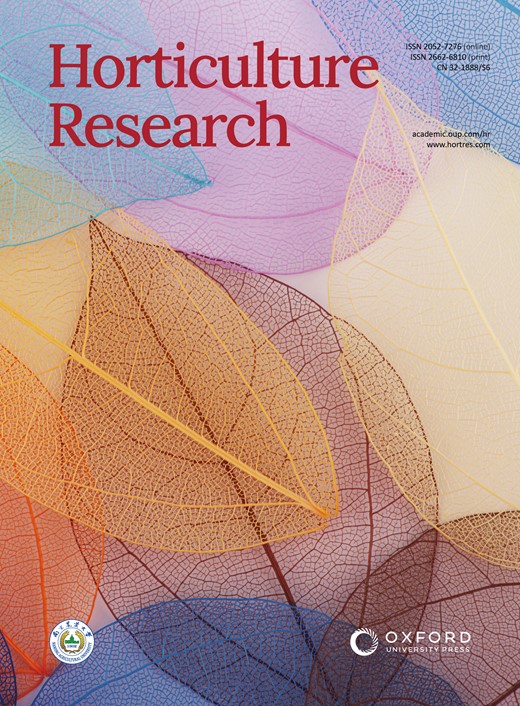Warming temperature reduces the risk of pre-harvest freezing injury and modifies variety suitability in the main winegrape-growing regions of China
IF 8.5
1区 农林科学
Q1 Agricultural and Biological Sciences
引用次数: 0
Abstract
Rising temperatures cause advanced phenology of grapevines and increased sugar concentration in berries, which ultimately modify variety suitability in a given region. Here, four bioclimatic indices and a refined Grapevine Sugar Ripeness (GSR) model were employed to assess the suitability of six winegrape varieties across six winegrape-growing regions of China under historical climate conditions (1961-2020). First, four indices were compared between two periods, one before (P1) and one after (P2) an abrupt climate change events identified during 1988-2002 in these regions. Results showed three temperature related indices increased in six regions while the first fall frost day (FFD) was delayed by 0-16 days in five out of the six regions during P2 compared with P1. Second, GSR model was applied to simulate target sugar concentrations as a proxy for grape harvest dates (GHDs). Direct utilization of original GSR model yielded unsatisfactory predictions with clear bias. Consequently, GSR model was recalibrated with local data to obtain an acceptable performance with R2 and NRMSE values of 0.83 and 2.8% as well as 0.83 and 3.1% for the calibration and validation datasets, respectively and further simulated GHDs of six varieties with advanced values of 6-30 days in six regions for P2 in comparison with P1. To provide a holistic view of freezing injury risk before harvest, comprehensive freezing injury index (CFI) was developed by integrating the frequency, duration, and severity of the freezing risk. CFI decreased (2%-60%) during P2 in all regions and the magnitudes of decrease was elevation dependent. These findings provide valuable insights for the selection of varieties that can more reliably achieve fully mature fruit, producing more balanced wines with greater typicity under warming climate.在中国主要的葡萄产区,温度升高降低了收获前冻害的风险,改变了品种的适宜性
气温上升导致葡萄物候提前,浆果中的糖浓度增加,最终改变了葡萄品种在特定地区的适应性。在历史气候条件下(1961-2020年),采用4个生物气候指标和一个精炼葡萄糖成熟度(GSR)模型对中国6个葡萄产区的6个酿酒葡萄品种的适宜性进行了评估。首先,比较了1988—2002年气候突变事件发生前(P1)和发生后(P2)两个时期的4个指数。结果表明:与P1相比,P2期间6个地区的3项温度相关指数均有所增加,其中5个地区的初霜日延迟了0 ~ 16 d;其次,应用GSR模型模拟目标糖浓度作为葡萄收获期(GHDs)的代理。直接利用原始GSR模型预测结果不理想,偏差明显。因此,利用当地数据对GSR模型进行重新校准,获得了较好的性能,校正数据集的R2和NRMSE分别为0.83和2.8%,验证数据集的NRMSE分别为0.83和3.1%,并进一步模拟了6个地区6个品种的ghd,其提前值为6-30 d,与P1相比。为了全面评价采收前的冻害风险,综合冻害发生的频率、持续时间和严重程度,建立了综合冻害指数(CFI)。CFI在P2期间均呈下降趋势(2% ~ 60%),且下降幅度与海拔高度有关。这些发现为选择品种提供了有价值的见解,这些品种可以更可靠地获得完全成熟的果实,在气候变暖的情况下生产出更平衡、更具典型性的葡萄酒。
本文章由计算机程序翻译,如有差异,请以英文原文为准。
求助全文
约1分钟内获得全文
求助全文
来源期刊

Horticulture Research
Biochemistry, Genetics and Molecular Biology-Biochemistry
CiteScore
11.20
自引率
6.90%
发文量
367
审稿时长
20 weeks
期刊介绍:
Horticulture Research, an open access journal affiliated with Nanjing Agricultural University, has achieved the prestigious ranking of number one in the Horticulture category of the Journal Citation Reports ™ from Clarivate, 2022. As a leading publication in the field, the journal is dedicated to disseminating original research articles, comprehensive reviews, insightful perspectives, thought-provoking comments, and valuable correspondence articles and letters to the editor. Its scope encompasses all vital aspects of horticultural plants and disciplines, such as biotechnology, breeding, cellular and molecular biology, evolution, genetics, inter-species interactions, physiology, and the origination and domestication of crops.
 求助内容:
求助内容: 应助结果提醒方式:
应助结果提醒方式:


